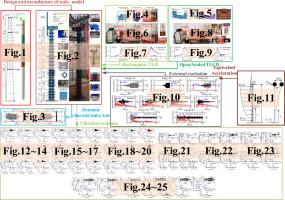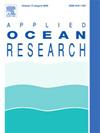Shaking table test of TLD/TLCD vibration control for offshore wind turbine support structure
Abstract
In this research, a scale-model with a similarity-ratio of 1:15 is specifically designed for shaking table test based on a 6.45MW OWT (Offshore wind turbine). The scale-model is equipped with a TLD (Tuned liquid damper) at the top and a TLCD (Tuned liquid column damper) at 2/3 of its height. Various external excitations with distinct spectral characteristics are applied to analyze the vibration characteristics of the OWT and the damping performance of the TLD/TLCD. The results indicate that the dynamic characteristics satisfy the similarity-ratio between the prototype-model and scale-model. The acceleration response of the OWT is significantly influenced by the external excitation spectrum, whereas the displacement response is primarily governed by the model 1st-order natural-frequency. With the mass eccentricity applied at the tower top and bidirectional excitation input, torsional deformation occurs in the tower, resulting in a ‘beat vibration’ phenomenon. Upon the incorporation of TLD/TLCD, the vibration response attenuation-ratio can reach up to 70 % under harmonic excitation, up to 25 % under seismic excitation and up to 50 % under equivalent base acceleration. After the implementation of vibration attenuation, there is a significant reduction in the time-domain response, and the rate of reduction is accelerated. In the frequency-domain response, the spectral peak at the natural-frequency disappears.


 求助内容:
求助内容: 应助结果提醒方式:
应助结果提醒方式:


